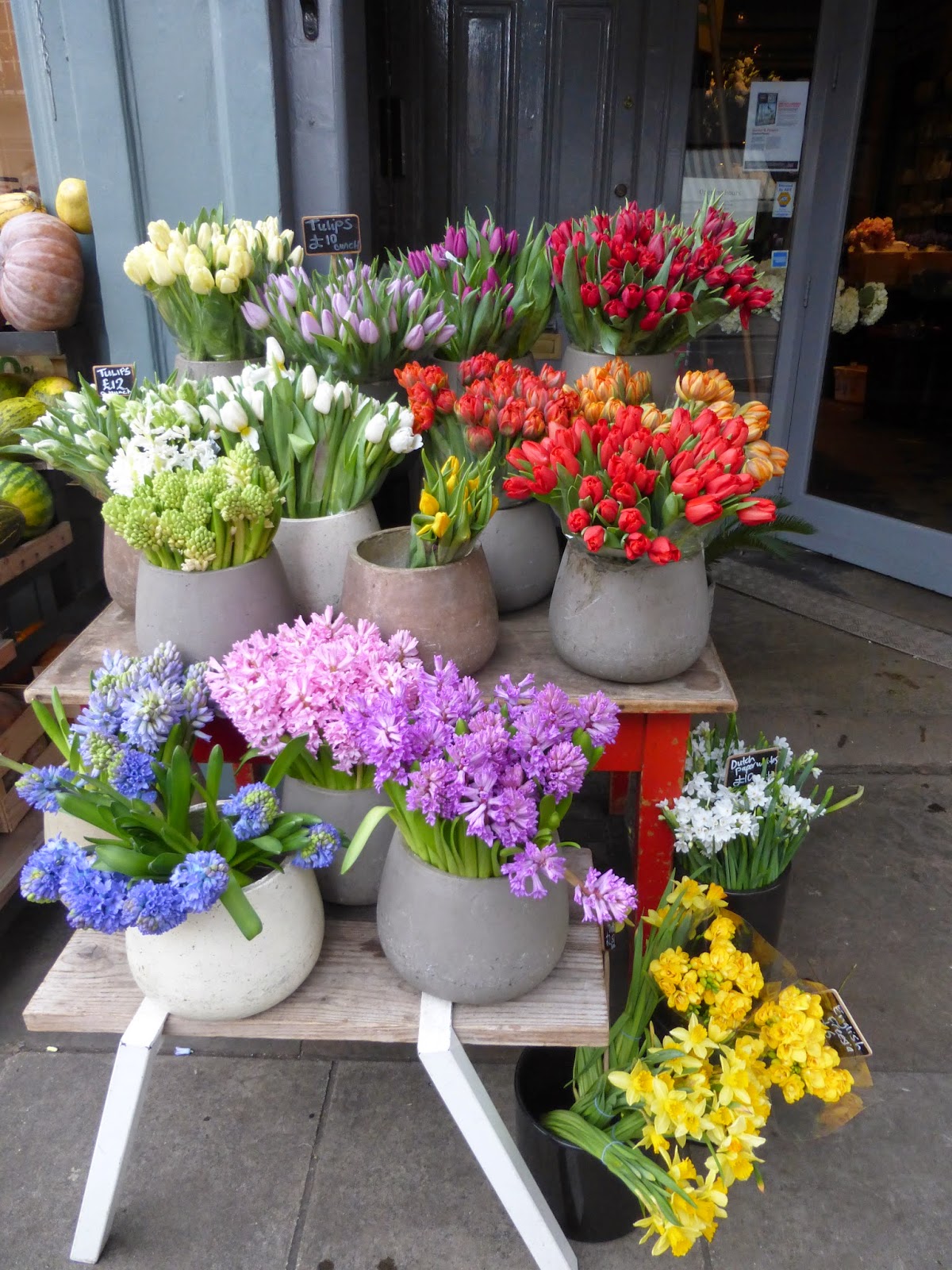 There are no above ground buildings for this station and it is accessed by two sets of steps.
There are no above ground buildings for this station and it is accessed by two sets of steps.
You emerge from the station into suburbia. Although not that far, distance wise, from Central London, it seems like another world of quiet, residential streets and large Victorian and Edwardian houses.
 Next to the Underground is a cab shelter.
Next to the Underground is a cab shelter.
This is Warwick Avenue, the road that the station is on. It is just a short walk down Warwick Avenue to where the Paddington arm of the Grand Union canal meets the Regent's Canal and is known as Little Venice. The name was coined by Robert Browning the poet and it has come to refer to not just the canal but the area surrounding the canal.
 Next to the Underground is a cab shelter.
Next to the Underground is a cab shelter. |
| This is the Pool of Little Venice also known as Browning's pool named after Robert Browning who lived overlooking the Canal |
This is the Bridge House pub which overlooks the canal. It is unusual as it has a small theatre above the pub specialising in comedy and new writers.
Standing on the Westbourne Terrace Road Bridge you look down onto the canal and the old Toll House which dates from 1812.
On the Bridge is this blue plaque. The parish of Paddington became a metropolitan borough of London in 1900. In 1965 the borough of Paddington was abolished and the area became part of the London Borough of Westminster, which for historic reasons is always called the City of Westminster.
Walking alongside the canal you can see the many narrowboats moored there. Lots of them seem to have permanent moorings looking at the shrubs and flowers that have been planted next to the private towpath.
A little further down the canal is the Maida Hill Tunnel (251m), one of only three tunnels on the Regent's canal. The other two being Islington Tunnel (886m) and the much smaller Eyre's tunnel (48m). Building on the tunnel began in 1812. To get through the tunnels, men had to lie on their backs on planks of wood and walk the barge through. Above the tunnel is a restaurant which is a great place for watching the boats travelling down the canal.
This is the view of the restaurant from the Edgware Road.
The Edgware Road is full of these large mansion sized buildings, built to house the rich middle classes as London's population increased in the 18th Cent.
I turned off the Edgware Road onto Clifton Road and came across this row of interesting and independent shops.
The Eagle , a mid Victorian pub with its decorative iron balcony.
This is the Colonnade Hotel on Warrington Crescent Built in 1865 as two separate Victorian houses it was converted into a boarding school fifteen years later. It remained as a school for over 80 years before becoming a hospital for women in 1886. It was here that Alan Turing was born in 1912.
Alan Turing was credited with breaking the Enigma code which led to the beginning of the end of WW2. If you have seen the film The Imitation Game with Benedict Cumberbatch then you will know the story of Turing. The building became a hotel in 1935 and counts a number of famous people as having stayed there including Sigmund Freud
The Prince Alfred on Bristol Gardens is another traditional Victorian pub which apparently serves excellent food. Walking along this road I cannot help but admire the houses especially this row of terraced housing with the shops beneath.
Curious to know the cost of living in this area I had a look at prices in an Estate Agency. I saw no properties for less than £1,000,000 but you could rent a 1 bedroomed flat for £360 per week. Any takers?

 Amongst the large houses you can still find the converted stable yards such as Elnathan Mews and Bristol Mews. One feature of Mews are the cobbles. Hard wearing but uncomfortable underfoot.
Amongst the large houses you can still find the converted stable yards such as Elnathan Mews and Bristol Mews. One feature of Mews are the cobbles. Hard wearing but uncomfortable underfoot.
The Warwick Castle is a well known pub in the heart of Little Venice and has been there since 1867. With a marble fireplace and an open log fire it is worth a visit if you are in the area.
Looking in the opposite direction I noticed the storm clouds were gathering so time to leave this delightful part of London.
Looking in the opposite direction I noticed the storm clouds were gathering so time to leave this delightful part of London.





































Excilent tour of Little Venice
ReplyDeleteWhile the property prices are frightful, they are high for good reasons and as you say yourself it is a delightful part of London.
ReplyDeleteAgain, another great tour of an area I have only heard of, but not visited (yet). You've got me thinking about station buildings, being above or below ground. Interestimg why this is.
ReplyDeleteThis is a lovely part of London but as you say rather upmarket. I saw the 'Imitation Game" It was a good movie. I love true stories best.
ReplyDeletethanks for the virtual tour! and for stopping by my blog this week. Have a happy week.
ReplyDeleteThanks for the tour. It reminds me at my visit 20 years ago. I fell in love withlittle Venice.
ReplyDeleteGreat stuff, very interesting, I never knew that about he tube signs.
ReplyDeleteVery clean and bright station and beautiful neighborhoods.
ReplyDeleteA lovely series of beautiful architecture.
ReplyDeleteI read all your stops ! that's really interesting ! I haven't been that far, except years ago we were in little Venice, but of course I don't recognize anything !
ReplyDelete